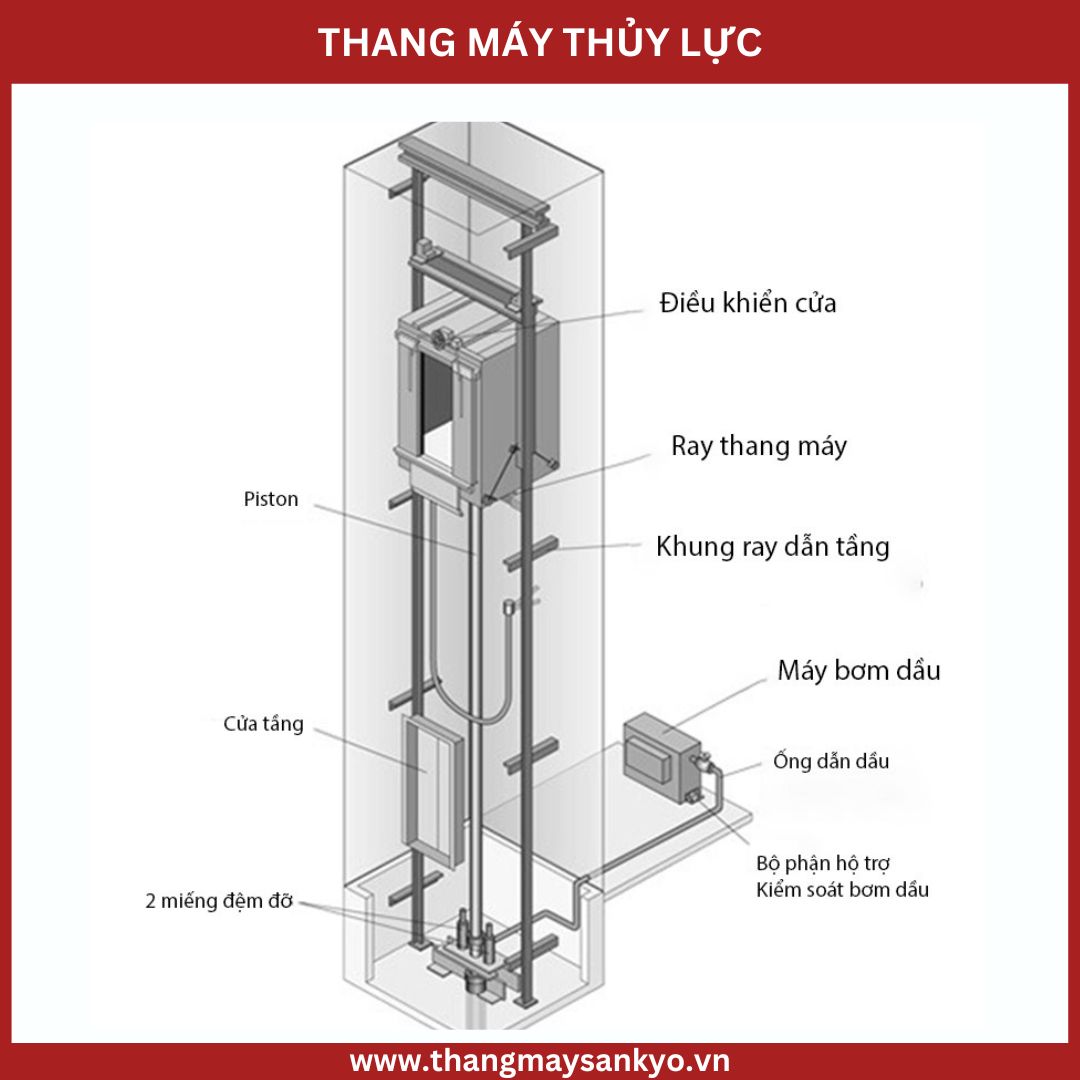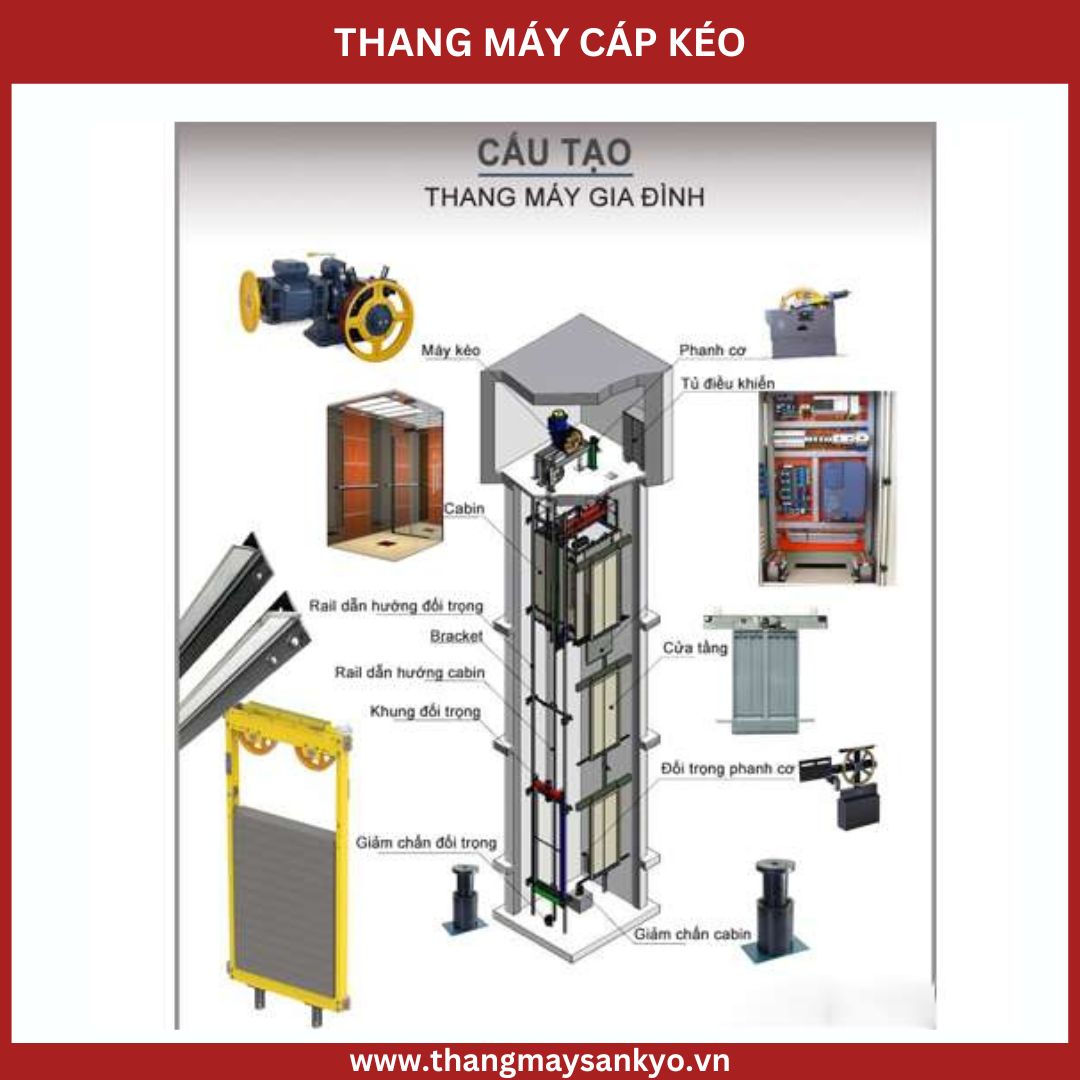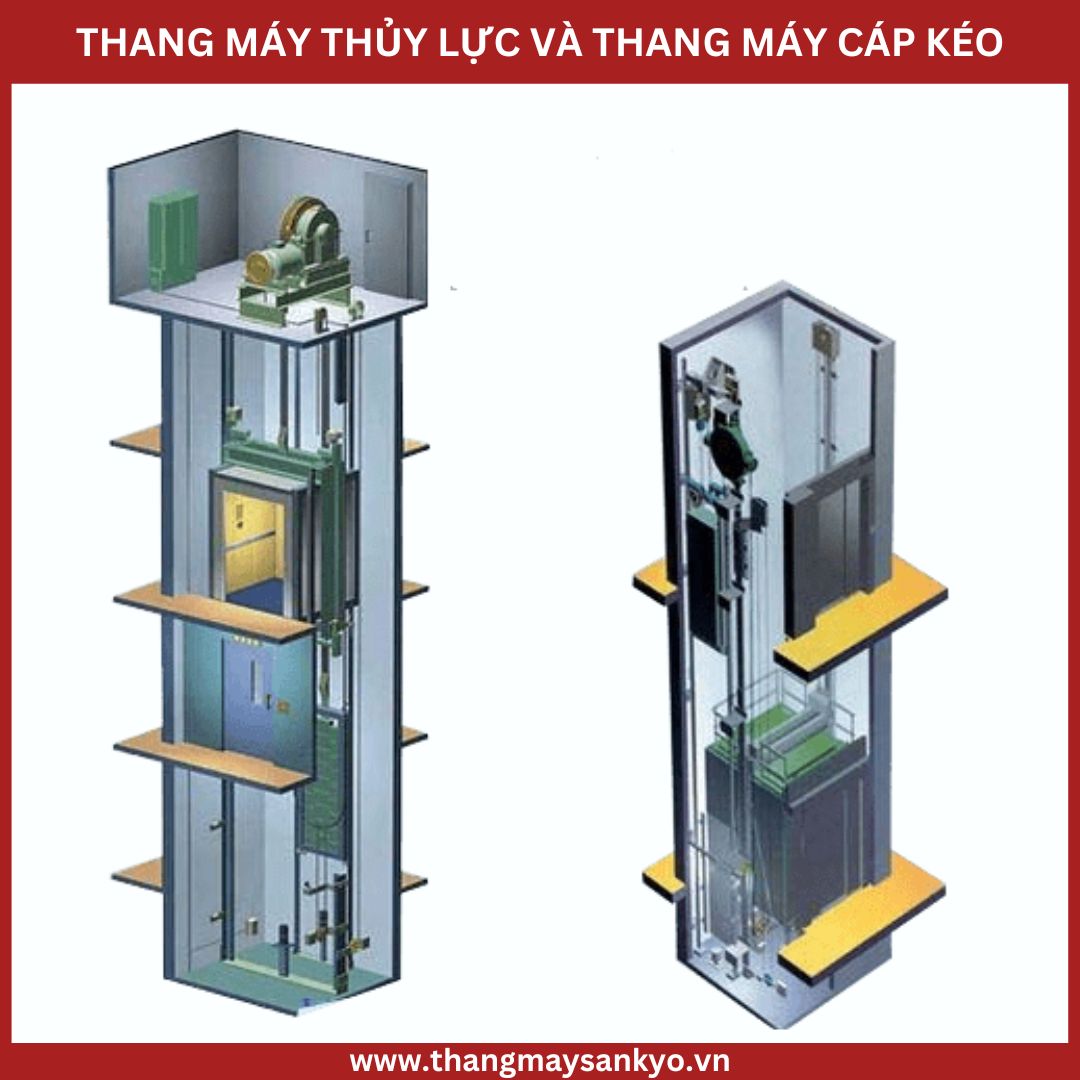The system is processing. Please wait a moment!
- Home experience homelift & elevator technical Sharing experiences
Compare Hydraulic Elevators and Cable Elevators: Suitable Choices for Every Family
When building or upgrading architectural works, choosing the right elevator type is one of the most important decisions. Hydraulic elevators and cable elevators are two popular types widely used in the construction and real estate industry. Each type of elevator has its own advantages and limitations, and the choice between them depends on many factors such as the usage environment, cost, performance and safety standards.
WHAT IS A HYDRAULIC ELEVATOR?
Hydraulic elevator is a type of elevator that uses the principle of hydraulic pressure to move. In a hydraulic elevator, the hydraulic pump system creates pressure inside a hydraulic cylinder, forcing fluid (usually hydraulic oil) through a control valve to raise or lower the elevator car. As pressure increases, the hydraulic cylinder expands and creates thrust, moving the cabin up or down. When the control valve is opened or closed, the pressure decreases and the elevator car stops at the desired position.
Hydraulic elevators are often used in buildings with a small number of floors and small loads. Although they have a lower initial cost than some other types of elevators, hydraulic elevators typically consume more energy and have height limitations. However, they remain a popular choice for construction projects with basic transportation requirements and limited budgets.

Advantage :
Hydraulic elevators have a number of notable advantages compared to other types of elevators:
Low initial cost : Hydraulic elevators often have lower initial costs than other types of elevators such as cable elevators. This makes them a popular choice for construction projects with limited budgets.
Easy to install : Hydraulic elevators often have a simpler structure and are easier to install than other types of elevators. This helps reduce the time and effort required for the installation process.
Powerful Operation : Hydraulic elevators use the principle of hydraulic pressure, allowing them to transport large loads easily and powerfully. This makes them suitable for buildings with heavy transport requirements.
Durable and less likely to break down : With a simple structure and few moving parts, hydraulic elevators are less likely to break down and require less maintenance than other types of elevators.
Ability to operate in the event of a power failure : Because no electricity is required to operate, hydraulic elevators can still operate in the event of a power failure, providing safety and convenience for users.
Defect :
Although there are many advantages, hydraulic elevators also have some disadvantages to consider:
Slow speed: Hydraulic elevators often have slower speeds than other types of elevators such as cable elevators. This can make moving around the building take longer.
Requires large installation space : Hydraulic elevators often require larger installation space due to the need for a hydraulic oil tank to operate. This can reduce the usable area in the building.
High energy consumption : Although electricity is not required to operate, hydraulic elevators consume more energy due to the need to use pumps to create hydraulic pressure.
Periodic maintenance requirements: Hydraulic elevators need periodic maintenance to ensure safe and efficient operation. This can increase maintenance and upkeep costs for the owned building.
Ability to make noise: Due to the use of pumps to create hydraulic pressure, hydraulic elevators can create noise and vibration during operation, affecting the user experience.
CONCEPT OF CABLE ELEVATOR
A cable elevator is a type of elevator that uses a cable system and traction machine to move the elevator cabin up and down within the building. The structure of a traction cable elevator consists of one or more cables attached to the elevator car and moved by an electric traction machine or other motor system. Cable elevators are commonly used in high-rise buildings and commercial buildings for the purpose of moving people and goods quickly and efficiently.

Advantage:
Cable elevators have many advantages that make them a popular choice in many different applications. Here are some main advantages of cable elevators:
Large Load Capacity : Cable elevators have a large load capacity and can move goods and a large number of people effectively. This makes it the ideal choice for high-rise buildings and heavy goods transport areas.
Moving Speed : Cable elevators often have faster moving speeds than other types of elevators such as hydraulic elevators. This makes moving between floors in the building quick and convenient.
Ability to Operate Continuously : Cable elevators often operate continuously without requiring long rest periods between trips. This enhances performance and convenience for users.
High Safety : Control and safety systems integrated into cable elevators help ensure user safety. This includes safety sensors, emergency stop systems and other safety protection equipment.
Easy Installation and Maintenance : Cable elevators are often easier to install and maintain than other types of elevators such as hydraulic elevators. This reduces implementation costs and time, while increasing usability and saving resources.
Defect:
Although cable elevators have many advantages, there are also some disadvantages that need to be considered before choosing:
Height Limitations : Cable elevators often have limited travel height compared to other types of elevators such as hydraulic elevators. This can cause inconvenience in buildings with a high number of floors or that require frequent up and down movement.
Noise and Vibration : Some cable elevators may create noise and vibration during operation, especially when operating at high speeds. This can affect the comfort of the user and the living and working environment.
Requires Regular Maintenance : Cable elevators require periodic maintenance and technical inspections to ensure safe and efficient operation. This can increase costs and maintenance time compared to some other types of elevators.
Storage Space Required : Cable elevators require special storage space to install both the basic system and the cable. This may limit available space in certain applications.
Energy Consumption : Some cable elevator models can consume significant energy, especially when operating at high speeds or under heavy loads. This can result in higher operating costs and environmental impacts
SO YOU SHOULD CHOOSE TO USE A HYDRAULIC ELEVATOR OR A CABLE ELEVATOR
Choosing between cable elevators and hydraulic elevators depends on many different factors, including building specifications, intended use, budget, and personal preferences. Here are some points to consider when deciding between these two types of elevators:
Building Height : If the building has a high number of floors, a hydraulic elevator may be a better choice because it is capable of operating at great heights without the height limitations of cable elevators. .
Load Capacity : Cable elevators usually have a larger load capacity than hydraulic elevators. If the building needs to transport heavy materials or use an elevator for industrial purposes, a cable elevator may be more suitable.
Noise: Hydraulic elevators usually operate quieter than cable elevators, especially on high floors. This can reduce noise and vibrations in the building.
Energy Saving Ability : Hydraulic elevators have the ability to save more energy than cable elevators in some cases, especially when not operating at high loads.
Initial Cost and Maintenance: Cable elevators typically have higher initial costs and require greater periodic maintenance costs than hydraulic elevators. Considering initial budget and long-term operating costs is important when choosing the right elevator.
Space Requirements : Hydraulic elevators require water space to operate, while cable elevators require space to accommodate the cable system and controls. Considering the available space in the building is important to decide on the appropriate type of elevator.

Thus, choosing a hydraulic elevator or cable elevator needs to be based on many factors such as usage environment, cost, performance and safety criteria. In buildings with a small number of floors and low initial cost and maintenance requirements, hydraulic elevators may be the right choice. Meanwhile, for high-rise projects with high energy efficiency and safety requirements, cable elevators are a reasonable choice. To ensure the right choice, consulting with experts and manufacturers is necessary.



















